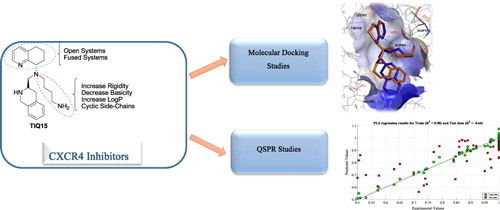Study of CXCR4 chemokine receptor inhibitors using QSPR and molecular docking methodologies

Abstract
CXCR4 is involved in inflammation, cancer metastasis and also HIV-1 entry into immune host cells. In the present research, it was decided to investigate the efficacy of some CXCR4 inhibitors from both pharmacokinetics and pharmacodynamics points of view. Quantitative structure–property relationship (QSPR) approach was applied to model the metabolic stability and instability of the compounds. Using QSPR modeling, it was tried to predict the metabolic stability using new hybrid algorithm which consisted of three different steps: descriptor reduction (PCA), stable–instable classification (KNN) and biological stability prediction (PLS). In the QSPR step, it is shown that the descriptor reduction (PCA) affects the result of the classification procedure (KNN). Besides, the obtained QSPR model can predict the metabolic stability of the stable compounds with R2 of 0.98 for train data and of 0.64 for test data. In other words, increment and decrement of stability were followed by the model. Molecular docking simulation was exploited to define the essential interactions of an effective inhibitor with CXCR4 receptor.
